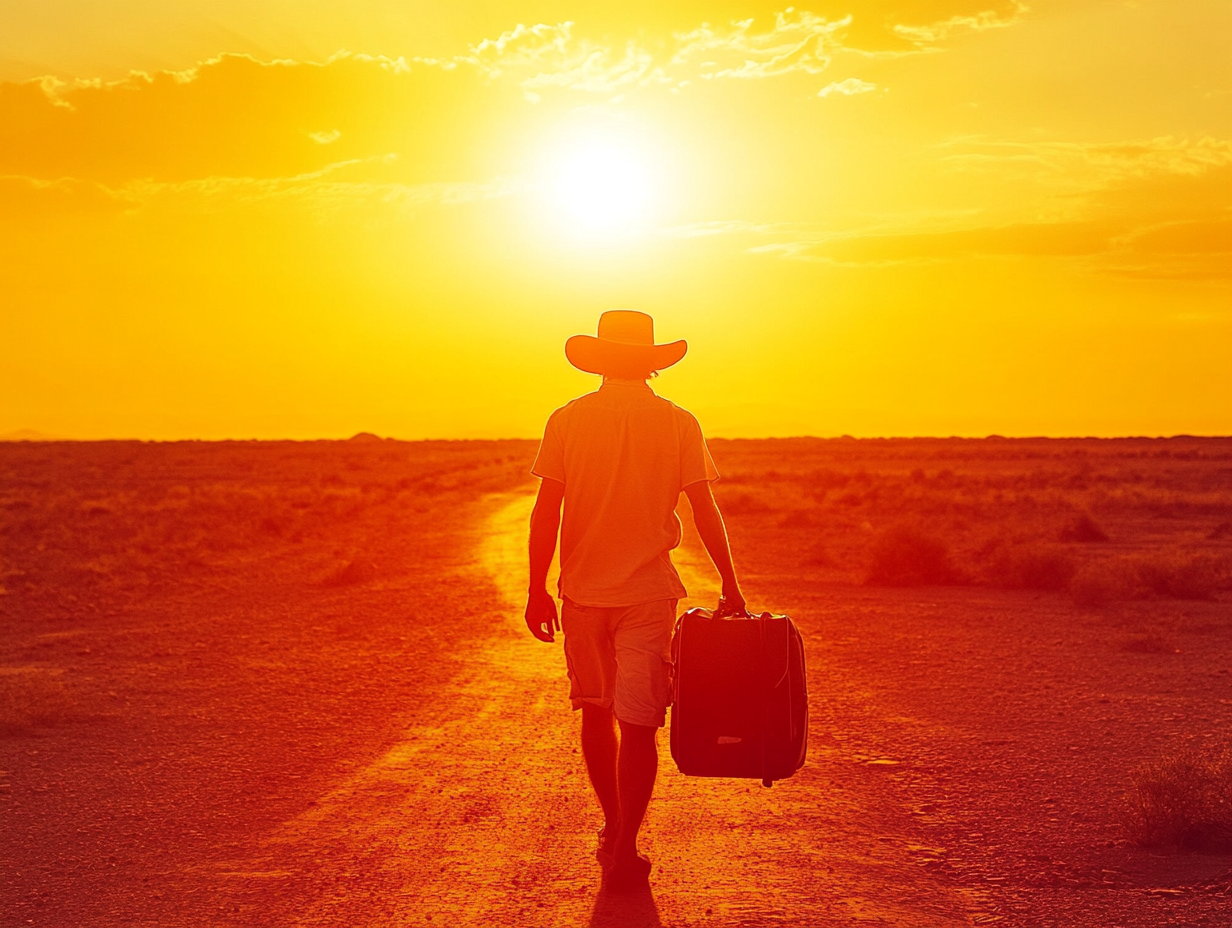There’s nothing like gallivanting around the globe on your own. These are the best solo travel destinations in the world
Packing your bags and jetting off somewhere alone has always been the dream for a lot of people, but ‘solo travel’ as a concept is becoming more and more popular. Nowadays, hotels and holiday companies are doing solo travelling packages, and social media enables us to feel connected even when we’re out there on our own.
But if this sounds like your kind of dream, it goes without saying that some countries are better than others for solo travel. Above all you should feel safe, but it’s also great to visit places where locals are hospitable, or there’s lots of opportunities to meet new people. Of course, it’s important to research how to stay safe (especially for women), but to start, we’ve rounded up the best destinations for solo travel, right here. Happy travels!
1. Japan
Japan is such a comfortable, safe and accessible destination for solo travellers that it’s almost a cliché. Yes, the locals are unfailingly friendly. Indeed, everything works so dependably that getting about is delightfully stress-free. Aye, eating and drinking on your own here is marvellously normal. But it’s all so true. I spent three months travelling solo around the country last year, from Sapporo in the chilly north to Kagoshima in the semi-tropical south, and at no point – no matter how far I strayed from the tourist trail – did I feel like any of the country was beyond my reach. A few words of Japanese go a long way, of course (especially in rural areas), but there’s no better way to do Japan than on your own.
2. Ireland
When it comes to feeling welcome, you’d be hard pressed to come by a nation who are more hospitable than the Irish. I might be a bit biased – my family all hail from the Emerald Isle – but I can guarantee that whether you’re in the hectic centre of Dublin or the easy-going shores of Galway, something about the people here will make you feel right at home. In fact, I’ve found that the plush countryside and dramatic hills paired with the wood-covered, pint-filled walls of pubs where a local is usually spinning a tale strikes the perfect balance between tranquillity and community – it’s primed for solo travel.
3. East Coast Australia
It goes without saying that Australia is absolutely massive. Mahoosive. Ginormous. And while that fact might make it seem daunting, particularly for those of us travelling solo, most of the action is concentrated on the East Coast. There are plenty of classic routes that run from Adelaide to Brisbane and beyond, allowing intrepid explorers to visit a variety of exciting towns that each seem to have their own magnificent ocean view. Australians are famously sociable, too, so meeting new people will never be an issue in this isolated corner of our beautiful planet.
4. Iceland
The aptly-named ‘land of fire and ice’ is a magnet for nature fanatics, and perfect for those travelling solo. An abundance of caves, caverns, black-sand beaches, waterfalls, volcanoes and geysers should be plenty to keep you occupied, as the landscape and scope of this Nordic island is second to none. The country’s charming capital, Reykjavik, is jam-packed with activity – why not add the Blue Lagoon or the Laugarvatn Fontana to your to-do list for some solo relaxation? And the best thing about Iceland for solo travellers is the safety. The country is named time and time again named one of the safest places for travellers, thanks to low crime rates and a generally accepting society. Plus you have a seriously good chance of seeing the Northern Lights. It’s definitely one for the bucket list.
5. Botswana
For those keen to explore the wonders of Africa, Botswana is likely your best bet. The country has a wealth of wildlife to appreciate and observe, with nearly 40 percent of its land area being devoted to national parks. The Okavango Delta, Kalahari Desert and Chobe National Park are world-renowned safari spots, home to everything from giraffes to rhinos. Botswana is also a politically and economically steady nation, and ranks highly on safety indexes for African countries. This, plus the fact that many Botswanans speak excellent English, makes it a great destination to navigate on your solo travels.
6. Canada
Canada’s name is one thrown around most often when it comes to solo travel. The population has a worldwide reputation for their friendliness, and the country has everything you could want from a travel destination. Incredible off-the-grid adventure opportunities like visiting the Rockies, Niagara Falls and Banff National Park offer up plenty to see for intrepid globetrotters. However, Toronto is considered one of the world’s most multicultural cities, and Vancouver is famed for its unique urban design, stunning surroundings and the fact it’s on the doorstep to some incredible nature. The weather? Not so great, but the people? Incredible.
7. Vietnam
Vietnam’s unique beauty and complicated history make it a compelling travel destination, particularly for those doing so alone. The country has grown into a popular travelling hotspot, and that’s led to a thriving social scene – the well-established tourist route means it should be really easy to meet like-minded travellers to journey alongside. Ha Long Bay, Hanoi and the Ha Giang Loop are three of the nation’s tourist highlights. There are also great transport networks, it’s budget-friendly and full of hostels. What more could you ask for when you’re travelling alone?
8. Croatia
Another super-safe solo-friendly destination is this jewel of the Adriatic. Boundless glorious beaches, fascinating mediaeval towns and relatively low prices are what Croatia has become so popular for. The nightlife is another perk of this place – the festival calendar is absolutely jam-packed, and Croatian cities are known for their cheap drinks and plethora of party spots. Eight national parks are also dotted around the country. Like waterfalls? There’s a whopping 90 of them at Plitvice Lakes, though if you want a dip, head to the smaller falls at Krka National Park instead. Croatia is also an underrated wine producer and, of course, a hotspot for Game of Thrones fans.
9. Chile
In South America, Chile leads the way in terms of quality of life, and unsurprisingly, lowest crime rate. It’s the perfect destination for people travelling alone thanks to its tight-knit community of backpackers, and, of course, abundance of sights to see. Atacama, the driest desert in the world, is located in the north, while there’s plenty to see in Santiago, the nation’s capital. You won’t go thirsty either, thanks to the fantastic Chilean repertoire of beer and wine. It’s also considered one of the best places in the world for stargazing, thanks to its high altitude.
10. Slovenia
Small but perfectly formed, Slovenia is a tremendous destination for solo travellers. The old ‘four seasons in a day’ adage is very much alive and well in a place where you can spend the morning skiing in the Alps before heading for a romantic solo sunset on the Adriatic at Piran. The capital, Ljubljana, is the perfect base for exploration, a city of friendly people and social spots an easy bus or train from Slovenia’s famous lakes and less-famous postcard villages. Pro tip: pick up a €15 IZLETka train ticket and get unlimited travel on the weekends.
11. New Zealand
New Zealand is a country that just gets things right. For one, it takes its reputation as one of the safest countries in the world very seriously, meaning travellers can explore in total security. But it isn’t usually safety that brings individual adventurers to New Zealand; instead, it’s the dazzling landscapes, buzzing towns and cities and convivial people that make NZ the place it is. All of the bigger towns are backpacker paradises filled with history, culture and booze (the great trifecta of backpacking), and the scenery in between is staggering.
12. Greece
No matter your preferred form of travel, a spot of island-hopping in Greece is almost a rite of passage for any traveller. That’s why you’ll meet everyone from excitable backpackers to considered veterans of the road here, each with a different story to tell. Athens and the mainland are fabulous, but the Greek Islands are particularly great for solo travellers, not to mention packed with excellent food. Each one seems ready to capture your heart and convince you to stay forever and ever. Kefalonia and Corfu are the most popular and thus offer endless social opportunities, while the serenity of Naxos and Icaria will appeal to more introverted explorers.
13. Portugal
Portugal’s most popular spots frequently pick up travel awards and plaudits alike, and the hype is not without good reason. Lisbon is a backpacker’s dream, while the dreamlike beauty of Porto attracts wide-eyed adventurers from all over the world. The Algarve is much more than its budget holiday destination suggests, and the rest of the country is packed with stunning sights and spots. This European treasure boasts 800km of coastline, and it’s a particularly surfer-friendly paradise, thanks to the fact it’s perched on the edge of the Atlantic.
14. Bhutan
What could be safer than a culture so infused with Buddhism? Bhutan is definitely a place to include on your list should safety be one of your top priorities. The Trans Bhutan Trail reopened in 2022, meaning travellers can follow in the footsteps of pilgrims and monks who trod the 400km route. The architecture is awe-inspiring, and the tiny country is of course perched on the very edge of the Himalayas, meaning the views are truly unmatched. There’s also tranquil lakes, luscious green valleys and dazzling glaciers to admire. Take heed: you will need some extra cash to splash in Bhutan, as the country has a pretty steep tourist tax.
15. Singapore
The phrase ‘melting pot’ is ridiculously overused, but one place that’s truly worthy of the label is Singapore. The island nation is a glorious meeting of different cuisines and cultures, with a landscape characterised by ancient temples and towering glass skyscrapers. Singapore is also incredibly safe, according to 96 percent of locals who we surveyed last year for our annual list of the world’s best cities. There are plenty of hostels if you’re wanting to meet other travellers. Spend your time soaking up the year-round tropical climate, and make sure to go on a food tour through Singapore’s markets.



